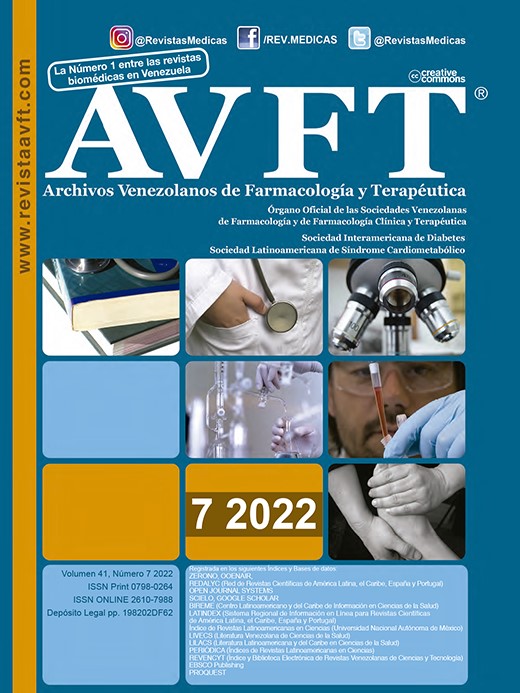Método de análisis morfémico como herramienta eficaz para la enseñanza de la terminología médica en el estudio del chino como lengua extranjera
Palabras clave:
términos, medicina tradicional, medicina moderna, préstamos semánticos, préstamos fonéticos, método de análisis morfémicoResumen
La cooperación internacional afecta a todas las esferas de la vida humana. El campo de la medicina no es una excepción en este sentido. En los últimos años, ha habido un aumento en el interés por la medicina china tradicional y china moderna en la comunidad médica mundial. En este sentido, existe una creciente necesidad de especialistas que hablen chino como lengua extranjera. Específico de la formación de tales especialistas para el trabajo en el sector de la salud es la necesidad de enseñarles una gran cantidad de términos médicos y también familiarizarse con las peculiaridades de la mentalidad china. Esto permitirá construir un diálogo con los colegas chinos de manera más efectiva. Porque "el conocimiento de los patrones de comportamiento puede mejorar la capacidad de los estudiantes para modelar un diálogo y, en general, sus habilidades para hablar en el idioma extranjero". Además, la comprensión de la mentalidad china a través del aprendizaje del chino como lengua extranjera puede resolver el "problema de la formación de la competencia etnocultural de los estudiantes - futuros maestros". Como la medicina tradicional y la medicina moderna coexisten en la República Popular China, cada una de ellas tiene su propio vocabulario de investigación. La peculiaridad de los términos pertenecientes a la medicina tradicional china es que se forman a partir de jeroglíficos polisemánticos y tienen un carácter metafórico, lo que se debe a la estrecha relación entre la medicina tradicional china y la antigua filosofía china. Por lo tanto, el enfoque más efectivo para explicar el significado de los términos de la medicina tradicional china es el uso del método de análisis morfémico en combinación con una explicación de los conceptos filosóficos y culturales detrás de estos términos. La mayoría de estos términos representan préstamos fonéticos y semánticos. El método de análisis morfémico es efectivo para explicar los significados de los préstamos semánticos que ocupan una parte importante en el sistema terminológico del idioma chino.
Descargas
Citas
Sharafieva AM, Yarmakeev IE, Pimenova TS, Abdrafikova AR, Tregubova TM. Modeling Dialogues in FL Class. International Journal of Higher Education. 2019;8(7):62-8. Yarmakeev Ie, Akhmadullina Rm, Valiakhmetova Nr, Salpykova IM. Potential of Pedagogical Disciplines for Forming Ethno-Cultural Competence of Students-Future Teachers. Astra Salvensis. 2018 Jan 4.
Džuganová B. Medical language-a unique linguistic phenomenon: Engleski. Jahr–European Journal of Bioethics. 2019;10(1):129-45.
Hacking JF, Rubio F, Tschirner E. Vocabulary size, reading proficiency and curricular design: The case of college Chinese, Russian and Spanish. InForeign Language Proficiency in Higher Education 2019 (pp. 25-44). Springer, Cham.
Boyanton S. The" Treatise on Cold Damage" and the Formation of Literati Medicine: Social, Epidemiological, and Medical Change in China, 1000–1400. Columbia University; 2015.
Youwei S. Loanwords in the Chinese Language. Routledge; 2020 Dec 30.
Zhang K, Denisenko VN, Ponomarenko EB, Zheltukhina MR, Denisenko AV, Shiryaeva OV. The Newest Borrowed Words and Methods of their Formation in the Russian-and Chinese-Language Internet Communication Space. Online Journal of Communication and Media Technologies. 2019 Sep 9;9(4):e201924.
Gorelov VI. Lexicology of the Chinese language. Moscow," Enlightenment. 1984.
Nazarova SA. On the issues of overcoming interlingual and intralingual interference in teaching Chinese to students: lexical and grammatical aspect. Modern Oriental Studies. 2021;3(3):401-9.
Kamalova LA, Umbetova MZ, Putulyan NS. Technologies and practices of linguistic and sociocultural adaptation of foreign students during their studies at the university. Contemporary Educational Technology. 2020 Dec 10;13(1):ep288.
Zhou Z. On Building a Specialized Chinese-English/English-Chinese Electronic Dictionary for Chinese Business English Learners. Journal of Language Teaching and Research. 2018 Jul 1;9(4):840-8.
Zhang R, Zou D. A state-of-the-art review of the modes and effectiveness of multimedia input for second and foreign language learning. Computer Assisted Language Learning. 2021 May 24:1-27.
Klimova B, Pikhart M, Benites AD, Lehr C, Sanchez-Stockhammer C. Neural machine translation in foreign language teaching and learning: a systematic review. Education and Information Technologies. 2022 Jul 5:1-20.
Koda K. Transfer facilitation effects of morphological awareness on multicharacter word reading in Chinese as a foreign language. Applied Psycholinguistics. 2021 Sep;42(5):1263-86.
Tham SW. Methods of Lexical Semantic Inquiry in Teaching Advanced-Level Vocabulary. InThe Routledge Handbook of Chinese Language Teaching 2019 Jul 22 (pp. 272-285). Routledge.
Zhang R, Mogana D. Metaphor Enriched Medical English Supplement for First-year Students in an Selected Chinese Medical University. Cogent Education. 2021 Jan 1;8(1):1898710.
Descargas
Publicado
Cómo citar
Número
Sección
Licencia
Derechos de autor 2023 AVFT – Archivos Venezolanos de Farmacología y Terapéutica

Esta obra está bajo una licencia internacional Creative Commons Atribución-NoComercial-SinDerivadas 4.0.




